Last September, Trinity High School turned 70 years old. Over the course its life, Trinity has changed the lives of thousands of students for the better and strengthened communities by producing men of faith and character. The family created by the efforts of Trinity students, parents, and faculty is a shining example of success to schools around the state and nation.
Though 70 years of history have passed since 1953, few in the Trinity family know much about our story. Though we achieve great successes, and our stories are known, every four years, there is a completely new student body. Though each quadrennial’s stories are remembered by alumni for decades, they are not remembered by students even four years later.
I have found that as one learns more about the history of Trinity, the more he appreciates the present of the school.
Trinity has always stood out from the crowd, so in recognition of our 70th birthday, a team of people familiar with Trinity’s history has made an effort to tell our story. Over the course of the school year, displays have opened in the rotunda, each one touching a chapter of Trinity’s history.
The photos, mementos and pieces that fill these boards were found in Trinity’s yearbooks and archives. For over 35 years, Trinity’s archives have collected historically significant material to preserve the school’s history. Over the past year, a team of hard-working members of the Trinity community have used this material to bring our history to life. The list of credits is at the bottom of this article.
To attract attention to the project, Dr. Rob Mullen met with ECHO staff for a detailed interview.
The goal of this project is that “any observer – be they students, alumni, parents or campus visitors – will gain an understanding of who we are, where we came from, what is unique about us, what we value.”
Our Founding
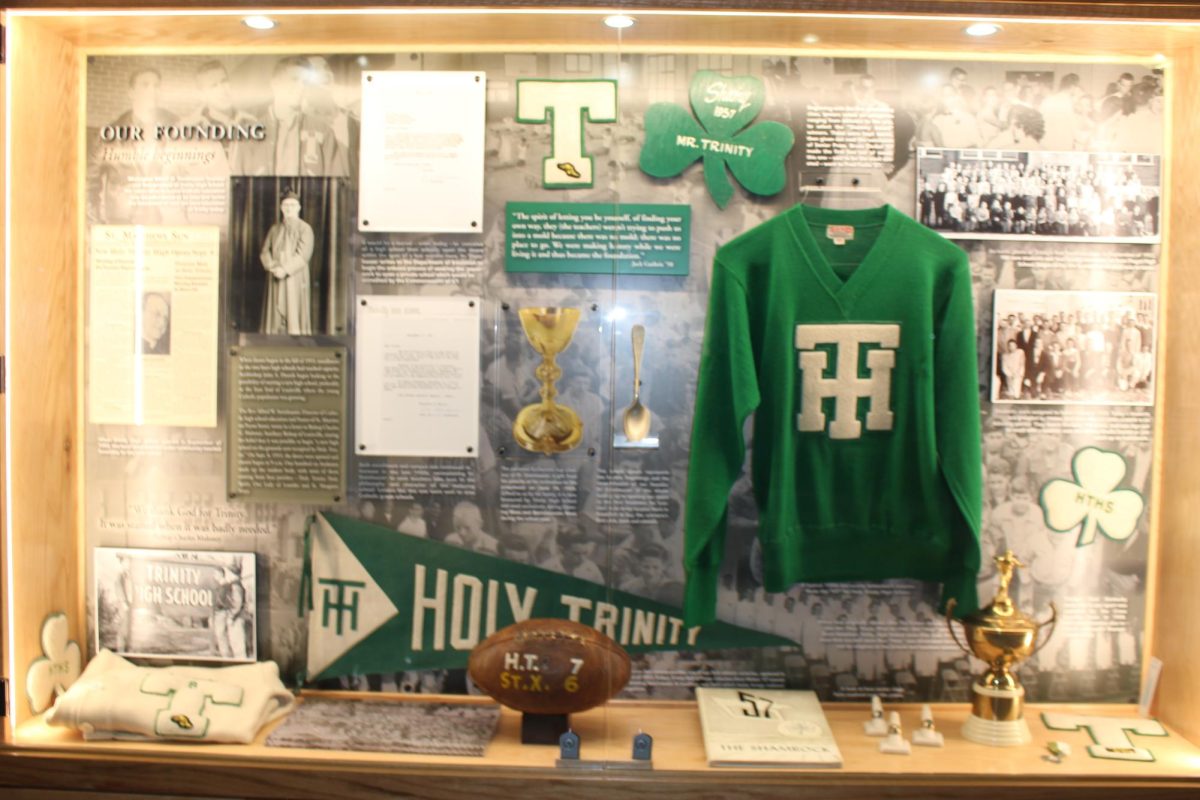
The first display focuses on Trinity’s humble beginnings. In 1953, Monsignor Alfred Steinhauser was told by the Archdiocese of Louisville to establish an all-boys’ high school. Trinity opened very quickly due to hard work from people who believed in its mission.
An abandoned church building on the grounds of Holy Trinity Grade School was set aside to house the new school. Steinhauser wrote letters to the state of Kentucky, organizing and registering the school in preparation for its opening. To ensure that the students would be fed, Steinhauser borrowed his sister’s car and drove to Frankfort, where he bought the cafeteria’s original cookware from an army surplus store.
Several of his letters and one of the spoons from the surplus store are currently on display, preserving their stories.
Mullen maintains that despite our humble beginnings, “we pretty quickly achieved success.”
In 1953, Trinity’s freshman team beat St. Xavier’s freshman team, showing that we could compete with a school with 89 more years of experience. In 1958, Trinity beat St. X again, this time in varsity play. The resulting rivalry continues to this day. The football from that first game is currently on display, painted “Holy Trinity 7, St. Xavier 6.”
One of the central reasons why Trinity achieved success is its willingness to adapt. This was demonstrated clearly and early on when the name was changed from Holy Trinity High School to Trinity High School. Because the schools had the same name there was confusion, but this was fixed by simply changing the name.
Despite the innocent nature of this change, it does not stop the class of 1957 from joking that their poor behavior is the reason why the “holy” was dropped from the name. However offhanded the quip may be, it is a testament to that first graduating class which could laugh together over even a small change to the school’s name. It’s also a testament to every subsequent graduating class, which has continued to embody this spirit of camaraderie.
In the Classroom
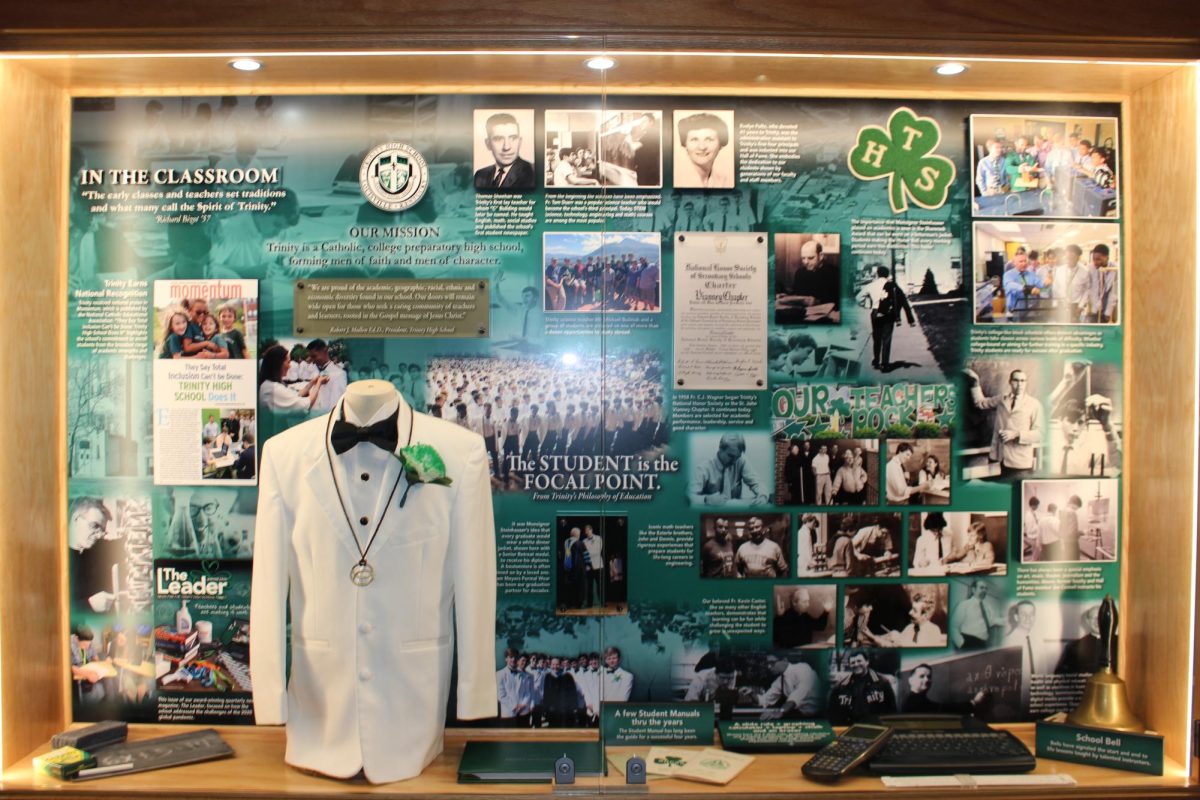
Every school is defined by its classrooms, and Trinity is no exception. Trinity’s philosophy is to bring the best education it can to every student. “We’ve always accepted the biggest, broadest range of students that we could,” and that speaks volumes about the ideals of the school.
Trinity’s teachers connect with students every day, becoming faces which represent Trinity to their students years later. “Alumni oftentimes think of the school and think of their favorite teacher,” so this board is covered with the faces of influential teachers and the students which they have helped.
Trinity’s historical effort to achieve excellence is also apparent. An early Shamrock Award patch is clearly displayed, highlighting this philosophy perfectly. While many other schools only give varsity letters for excellence in athletics, Monsignor Steinhauser always intended for Trinity to give letters for academic excellence as well. This letter shows that Trinity has never relegated itself to being good at only one thing, it has always strived for excellence both outside and inside the classroom.
Trinity students have balanced these high standards since the very beginning, as shown by a photo of an unknown Trinity student, confidently throwing his letterman jacket, emblazoned with a shamrock award, over his shoulder while walking through town. Because the student is walking out into town, this photo challenges all Trinity students to take what they’ve learned here out into the world.
This display stretches the complete 70 years of Trinity history, so there are photos of teachers and students from every decade. When alumni, no matter when they were at Trinity, visit this display, they can see at least one familiar face. “[It] doesn’t really matter exactly who they are, but it does give a wide range of people who have helped get us where we are.”
Innovation
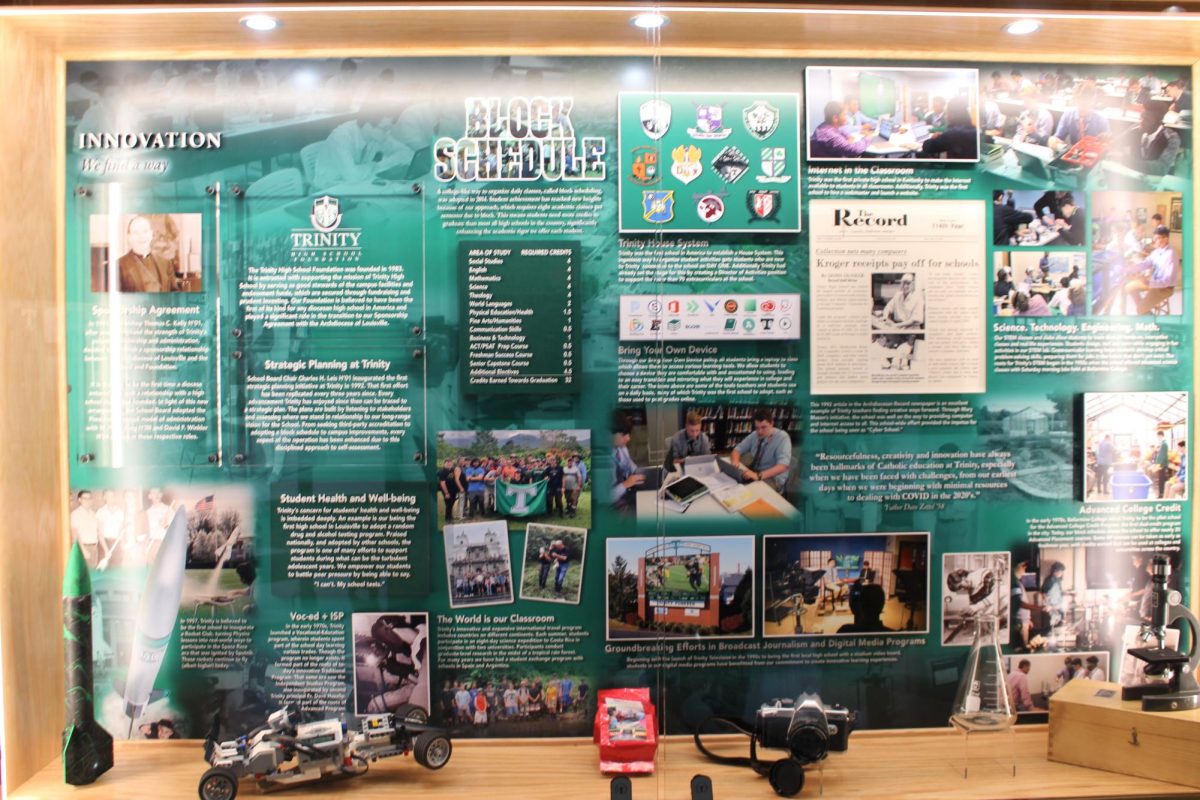
Trinity is on the cutting edge of educational practice and technology. Trinity students are offered specialized learning opportunities, advanced AP classes and a community which fosters brotherhood, putting Trinity ahead of the competition. These advantages are a result of a tradition of innovations which has been with us since the beginning.
“There are more than a dozen instances described here where we did something either for the first time in Louisville or even sometimes in the nation as a Catholic school.”
Today, most American schools make extensive use of the internet. At Trinity, classes are enhanced by laptops which allow students to access assignments and communicate with teachers at a moment’s notice. With nearly infinite information at student’s fingertips, the present and future of education has never been brighter. What seemed to be science fiction only decades ago is now a staple of American classrooms, and Trinity was “the first kindergarten through 12th grade school in the city to bring the internet into the classroom.”
Additionally, the bring your own device policy, which Trinity also pioneered, allows students to best understand and make use of their technology. With individual specialization, Trinity is projected to stay on the cutting edge of educational technology.
Trinity’s house system is a central aspect of student life and is now common in Catholic schools around the country. Under the house system, students are brought into a community of cooperation and competition for all grade levels and levels of difficulty. Competitions invite every student to come together with people they wouldn’t have come together with otherwise. Though the system is common today, “we believe we’re the first Catholic high school in America to adopt the house system.” In this way, Trinity sets the standard for schools not just in Louisville or Kentucky, but the whole nation.
Father Dave Zettel emphasizes that “resourcefulness, creativity and innovation have always been hallmarks of Catholic education at Trinity, especially when we have been faced with challenges, from our earliest days when we were beginning with minimal resources to dealing with COVID in the 2020s.”
Student Life
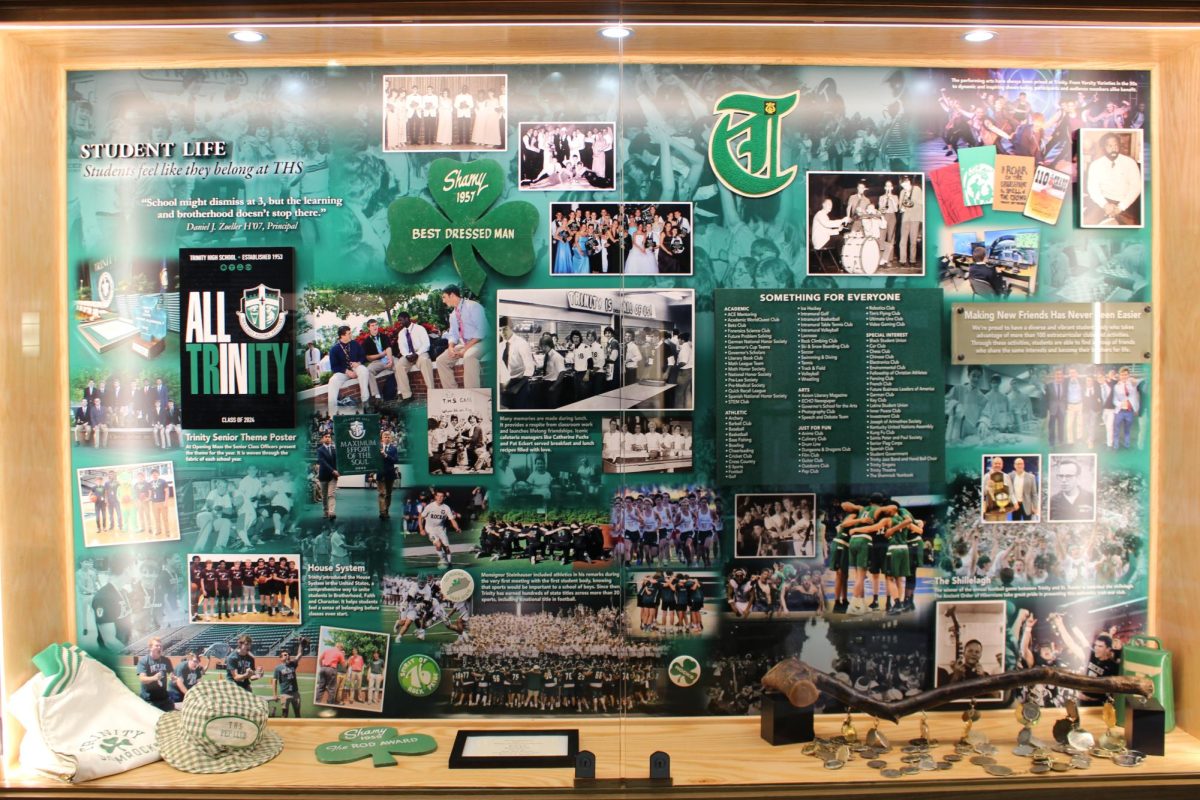
Though Trinity has a momentous legacy, excellent classroom achievement and cutting-edge innovation, it still allows students to enjoy themselves. Walking down the halls or sitting in classrooms, Trinity’s community is apparent in every smile and chuckle exchanged between friends. The strength of these friendships is made possible by the vibrant Trinity community outside the classroom. With every big game, dance, intramural league, house meeting and extracurricular activity, Trinity grows closer together. Through the hard work of staff and parents, Trinity has an out-of-classroom culture that other schools emulate, and this display is a testament to the things that “make high school fun.”
No matter who he is, every student has eaten lunch, so this board also recognizes the history of our cafeteria and its staff. Particularly, Catherine Fuchs, cafeteria director for 40 years, is given credit. Over her 40-year tenure, Fuchs would cut coupons out of the Sunday paper to help buy the food for each upcoming week. Her legacy of care not only continues in today’s excellent cafeteria staff, but throughout Trinity.
Sports games bring both the Trinity family and the family of Louisville high schools closer together. Thus, sports are featured several times, with the student section being emphasized. Trinity’s student section is one of the largest and most active in the state, showing the support of Trinity students for one another. With the support of the entire school, our teams win time and again. Whenever we have the Trinity vs. St. X Shillelagh (foreground right in the photo above), it will be displayed here.
Class dances, particularly senior prom, are clearly displayed as well. The Shammy Awards, handed out at senior prom, are also heavily featured. Much like how Trinity itself has changed over the years while staying true to its spirit, the Shammy Awards have evolved. For example, in the 1970s, a Shammy was awarded to the student with the coolest car: the Hot Rod Award. Additionally, since 1957, the name “Shammy” has been changed from the original “Shamy.”
Because the experiences of Trinity students change with each minute development, this display is intended to evolve as Trinity develops. Every year, the new senior class’s poster and an updated list of school activities will be put up.
What’s to Come
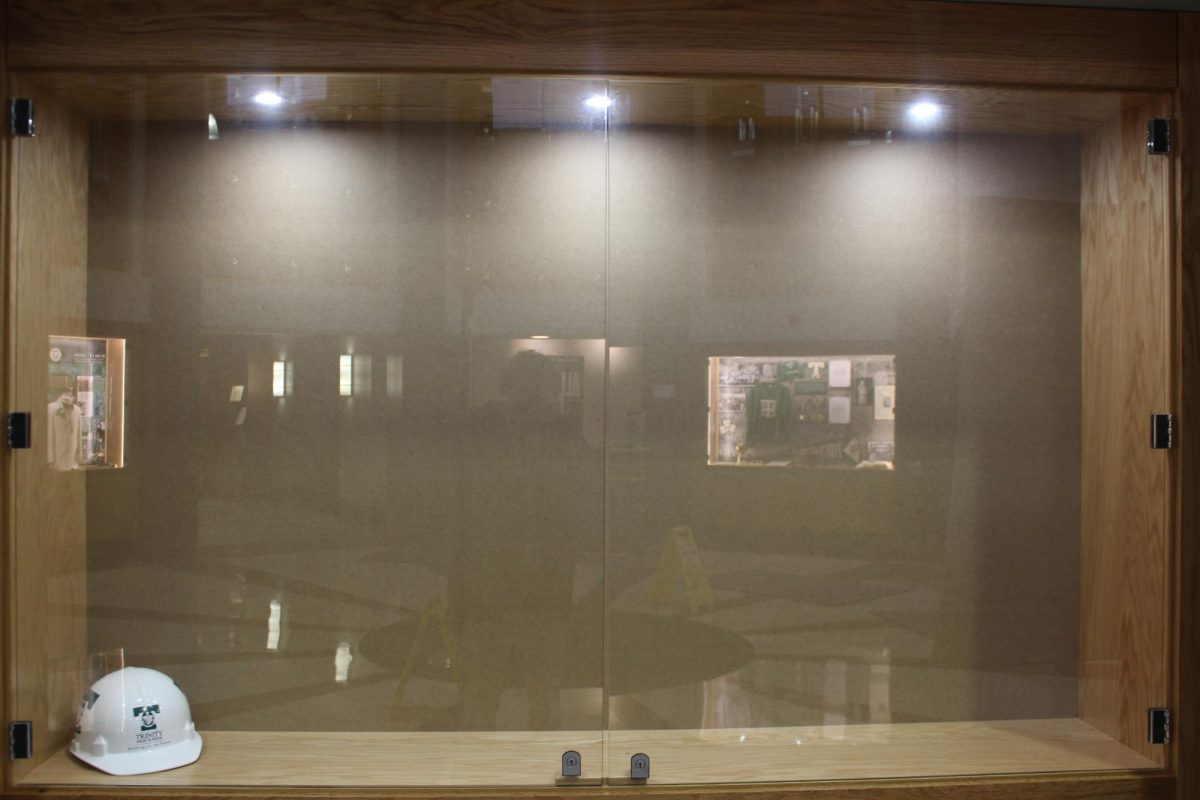
Trinity’s story isn’t complete, and this exploration of its history isn’t either. Not only are there another two displays opening very soon, but the rotunda will change as Trinity does.
A display focusing on the history of Trinity’s campus development from an abandoned church building to today’s expanding 13-acre complex is open as of last week. Before the Kentucky Derby, another display focusing on the life of faith at Trinity will complete the Trinity Rotunda Project. For years to come, these chapters will remind everyone, both familiar and unfamiliar with Trinity, where we come from and what we stand for.
No matter who you are, if you ever find yourself around Trinity with some free time, visit the rotunda. Every time one visits, he learns more about the school and the people in it. This article only scratches the surface of what is covered. To truly appreciate the depth of Trinity’s legacy which these displays cover, one must go and see them oneself.
Mullen gives credit to the following people who helped make the rotunda project a reality.
- Scott Scinta, Class of 1977, a graphic design artist
- Joe Porter, Class of 1978, former Trinity Vice president for School Advancement
- Chris Tompkins, Class of 1978, former Chair of the Trinity School Board
- Barbara Mullen, Trinity’s school archivist
- Jim Beckham, Class of 1986, Trinity’s Director of Major Gift fund raising
- James Torra, Honorary member of the Class of 2012, current Vice president for School Advancement
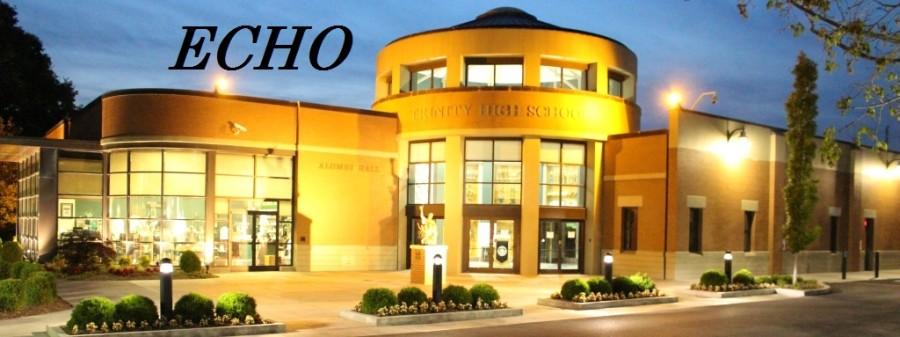

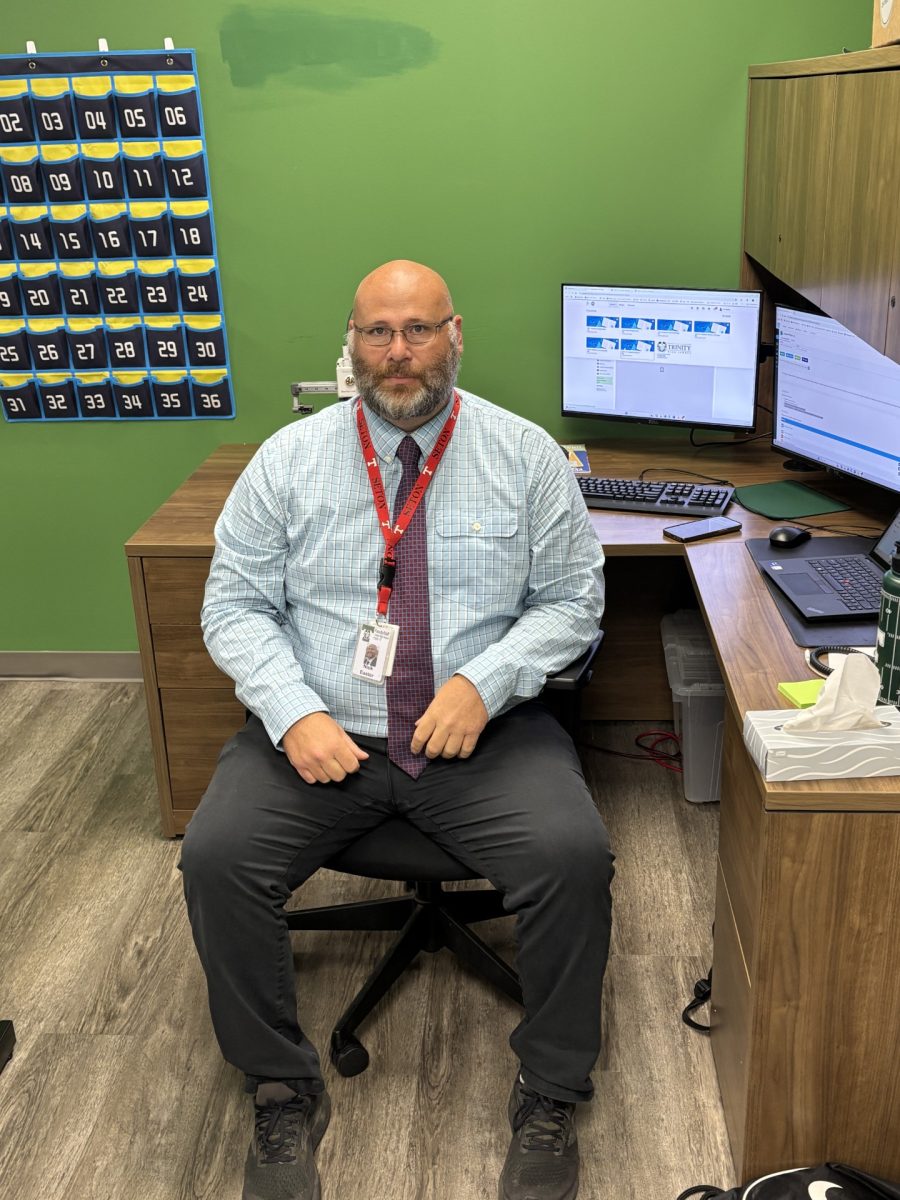
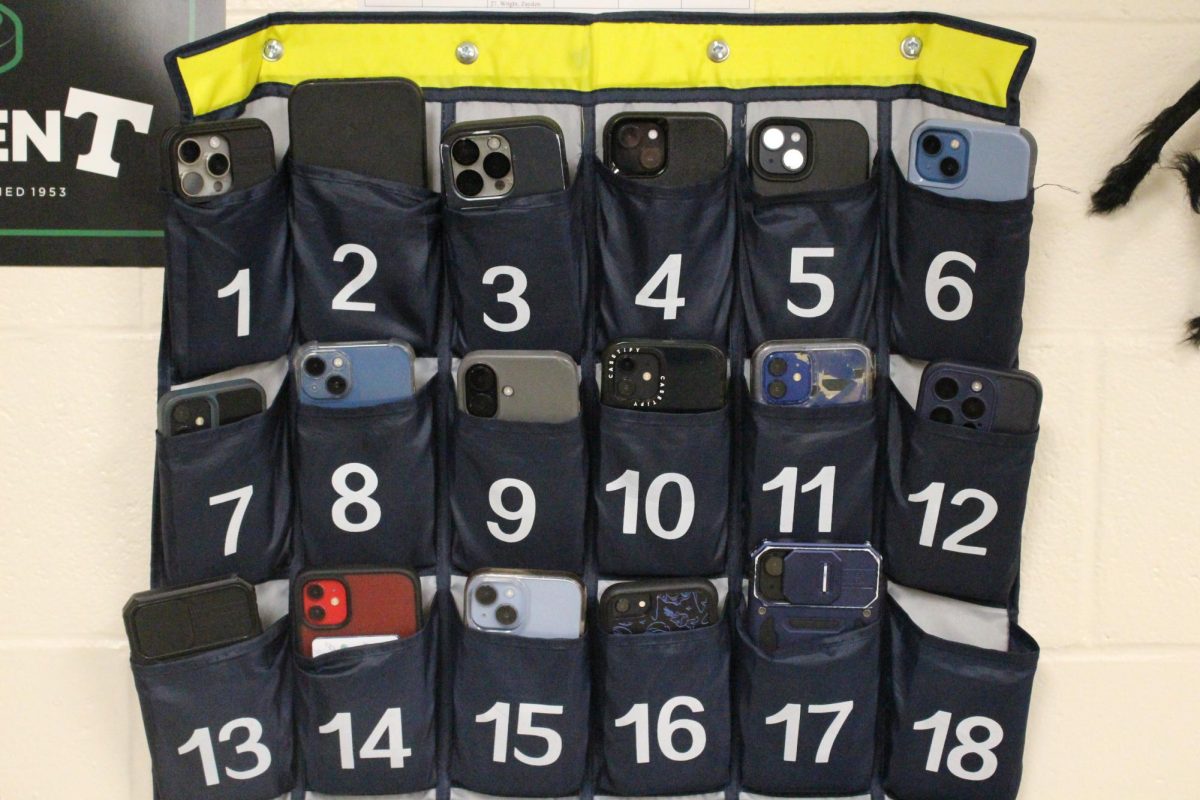
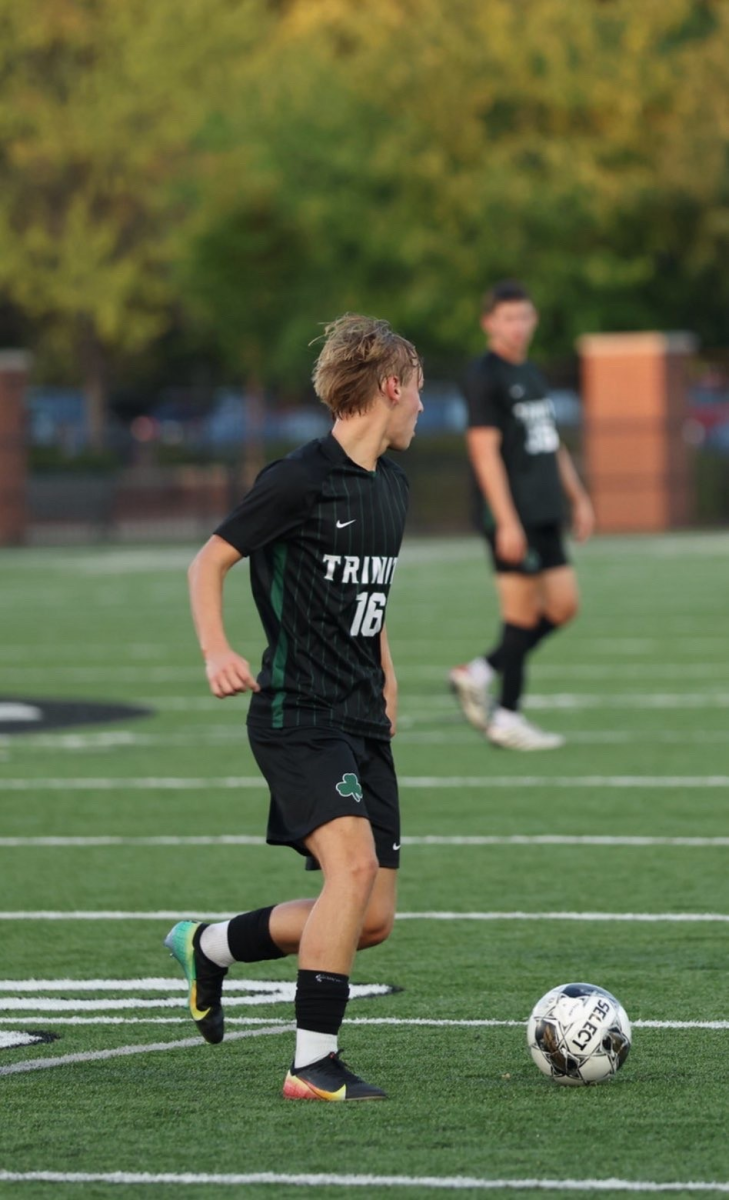
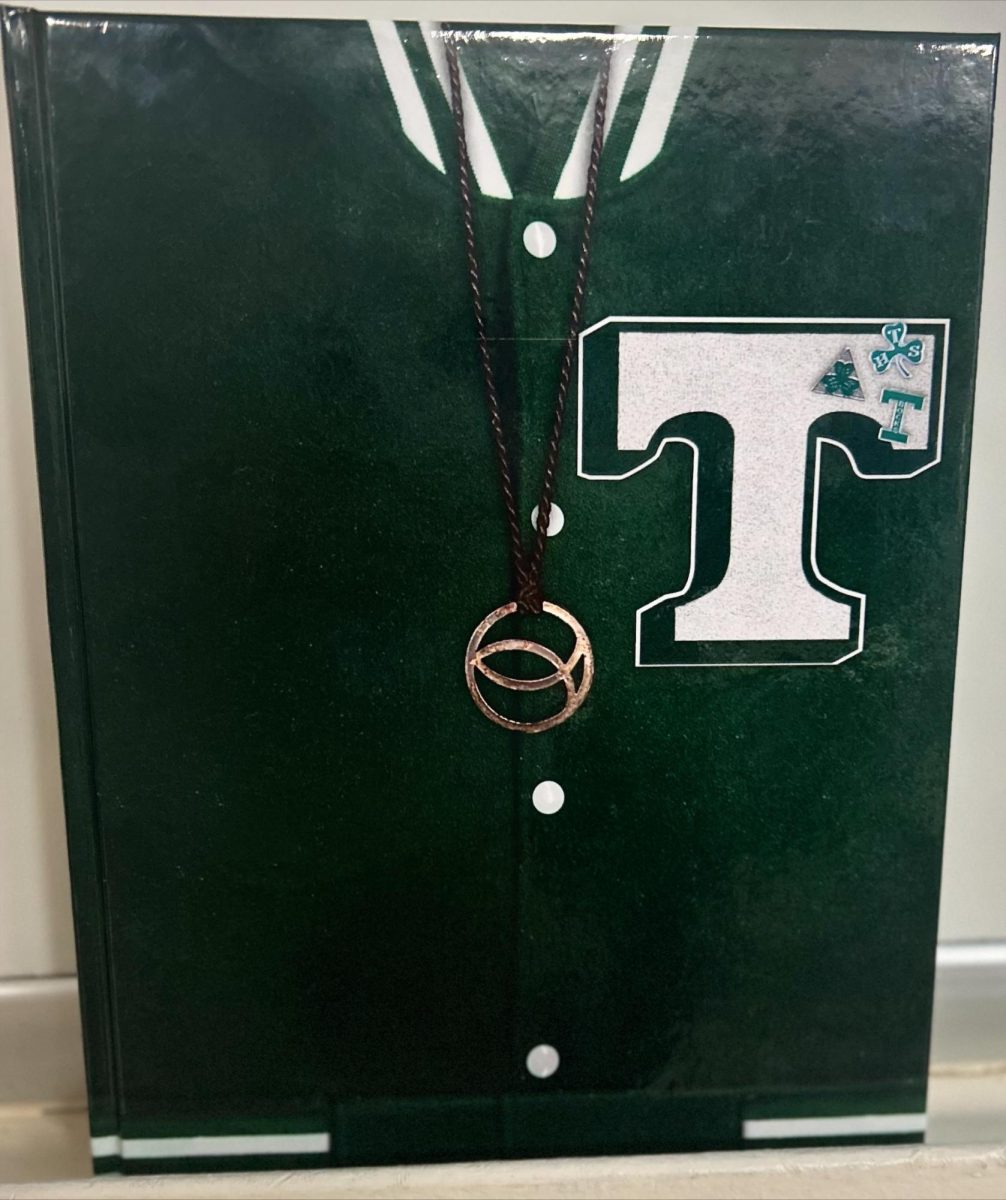

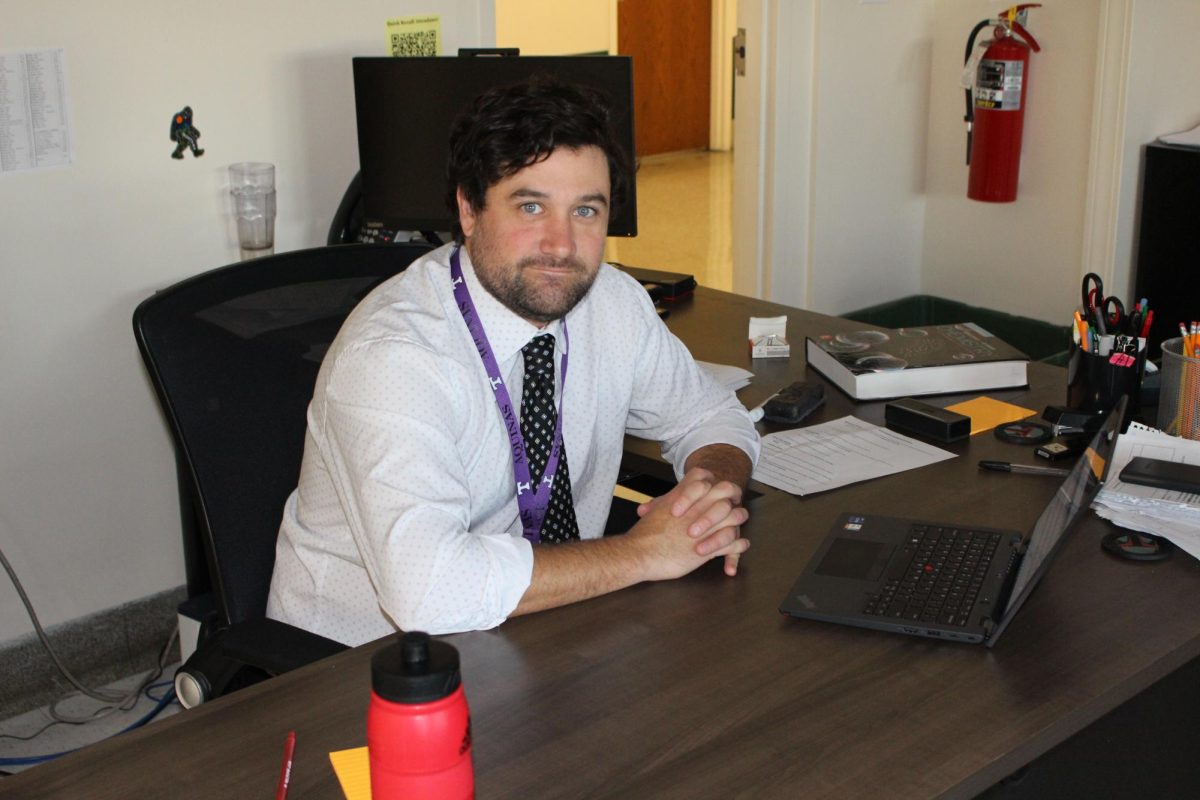
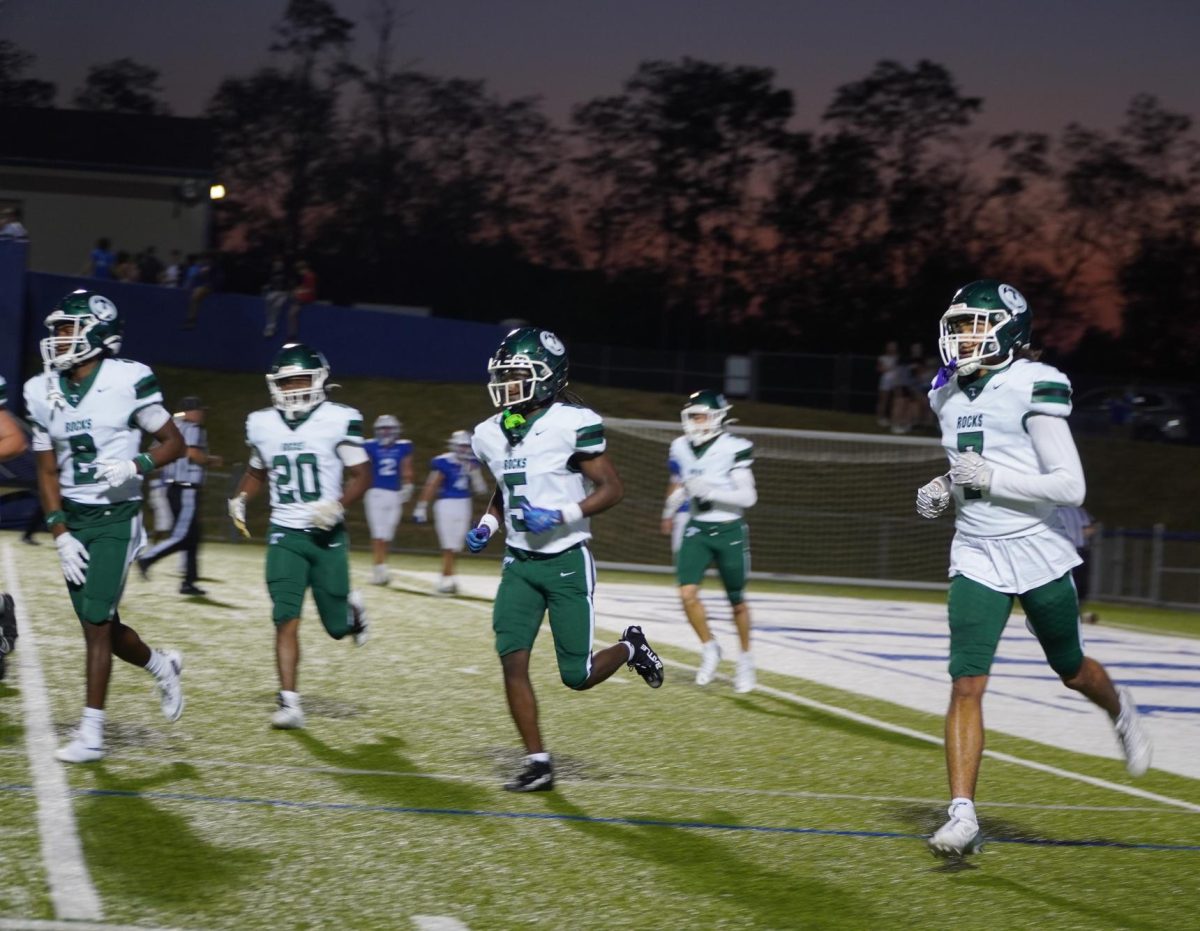
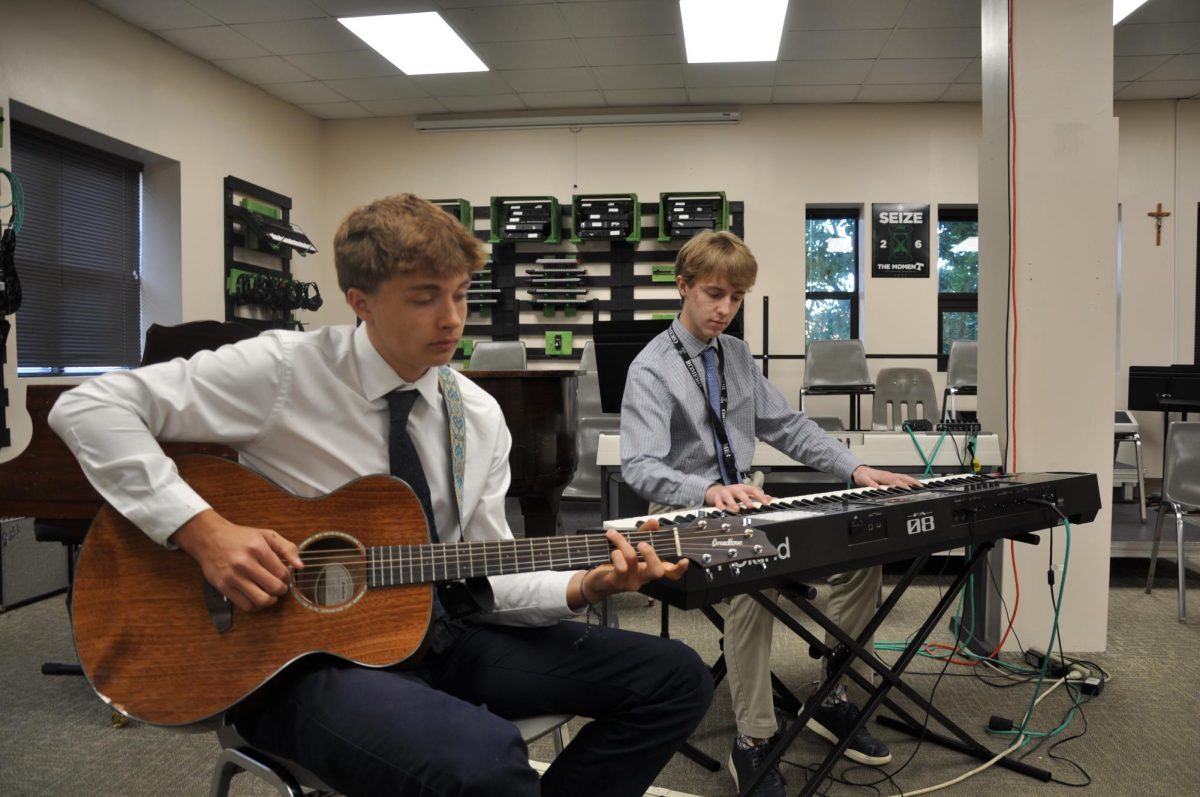
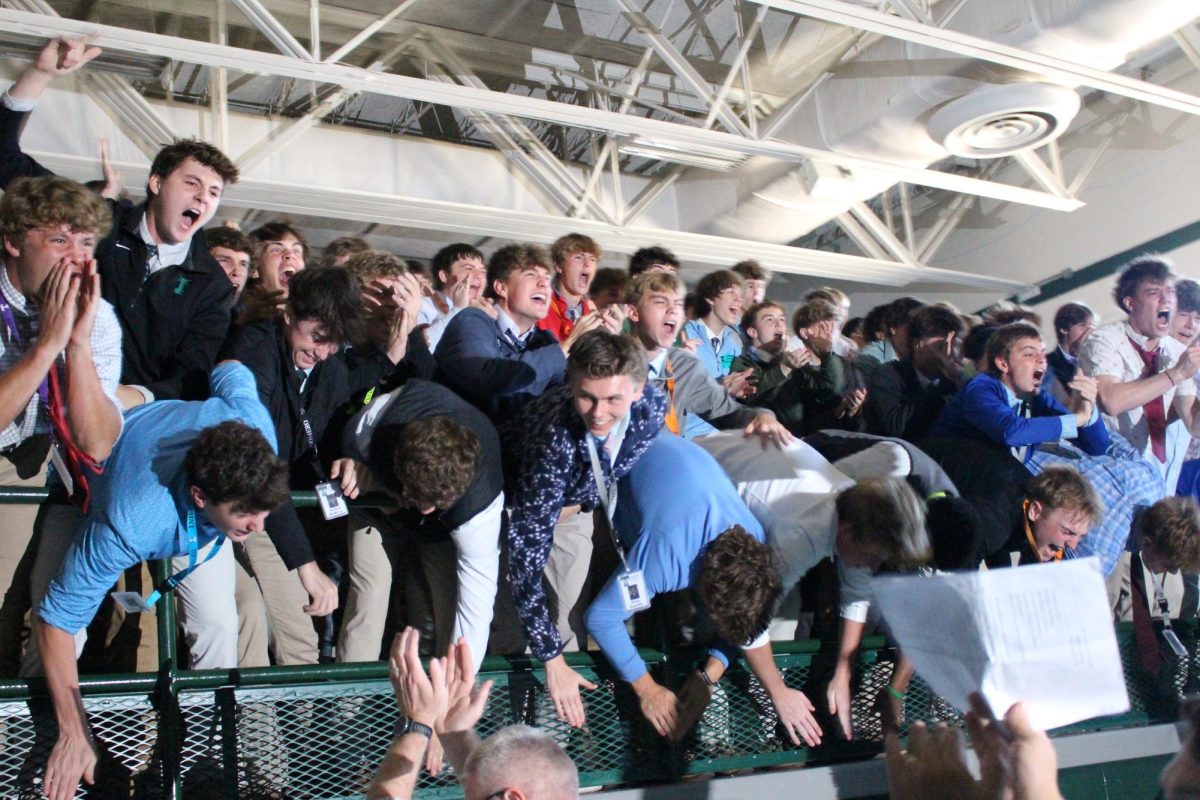
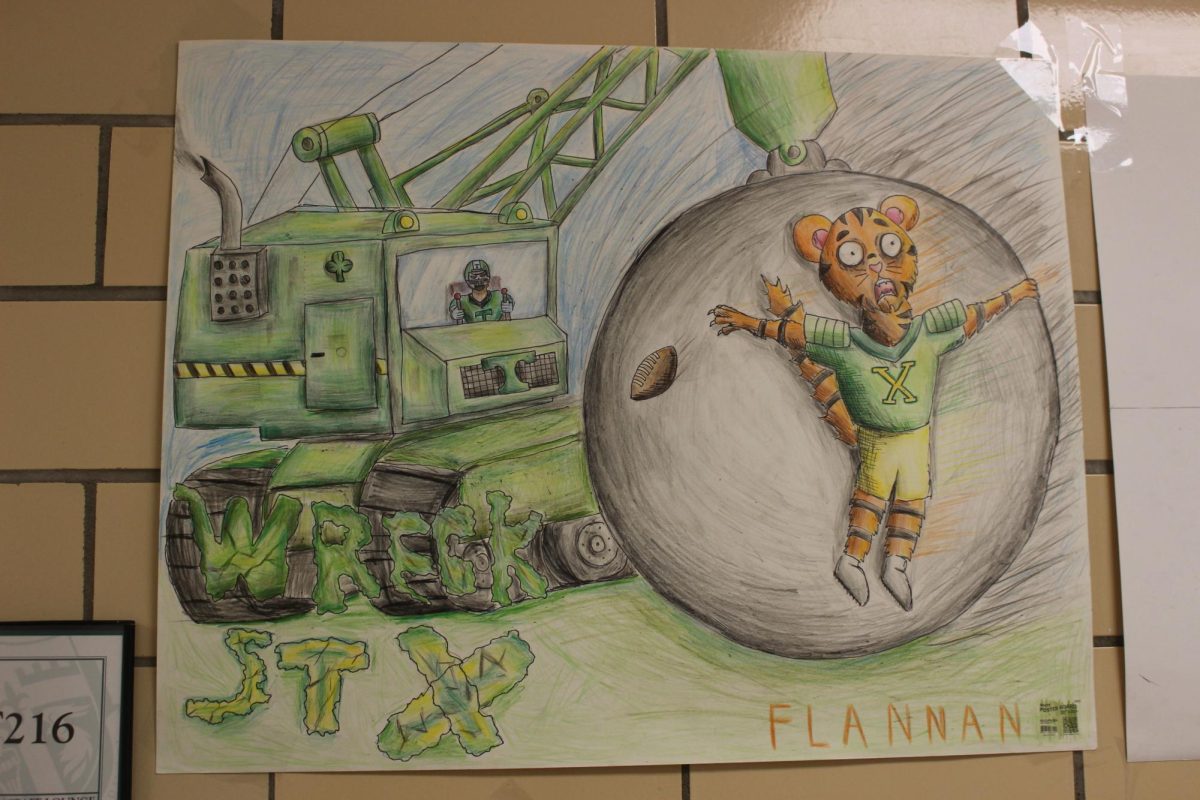
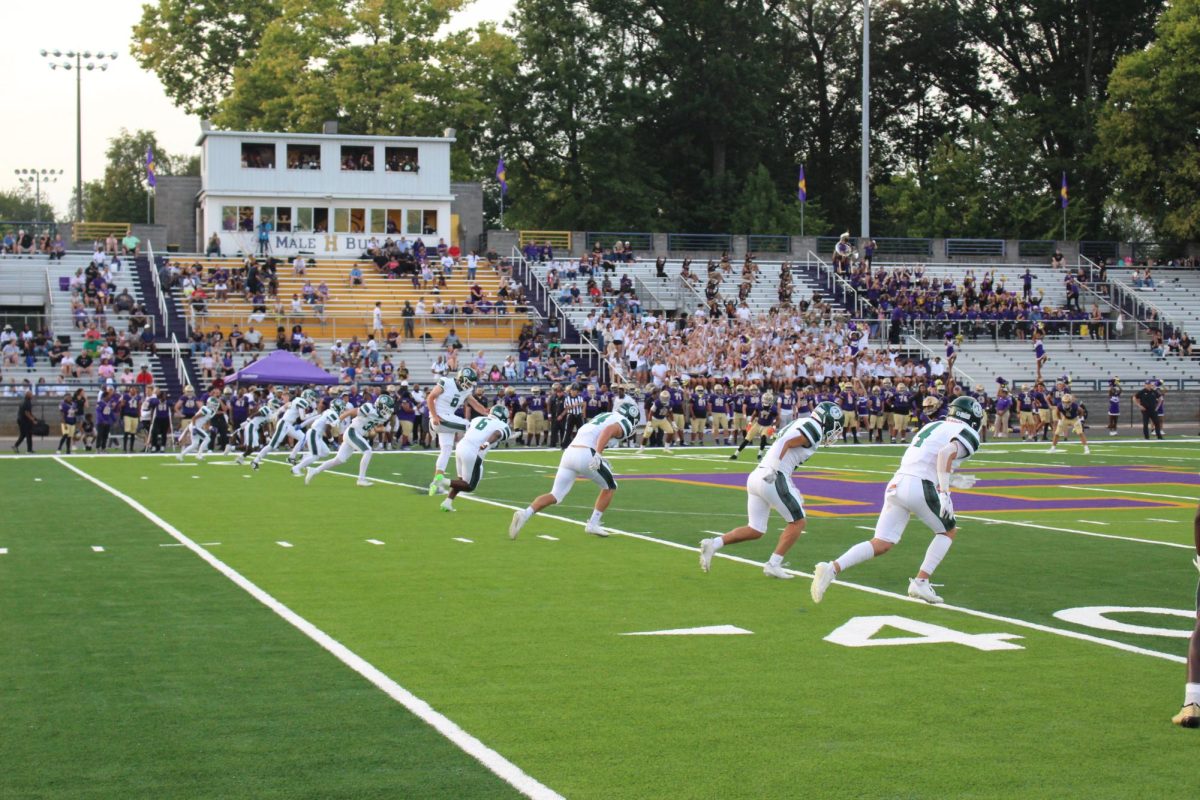
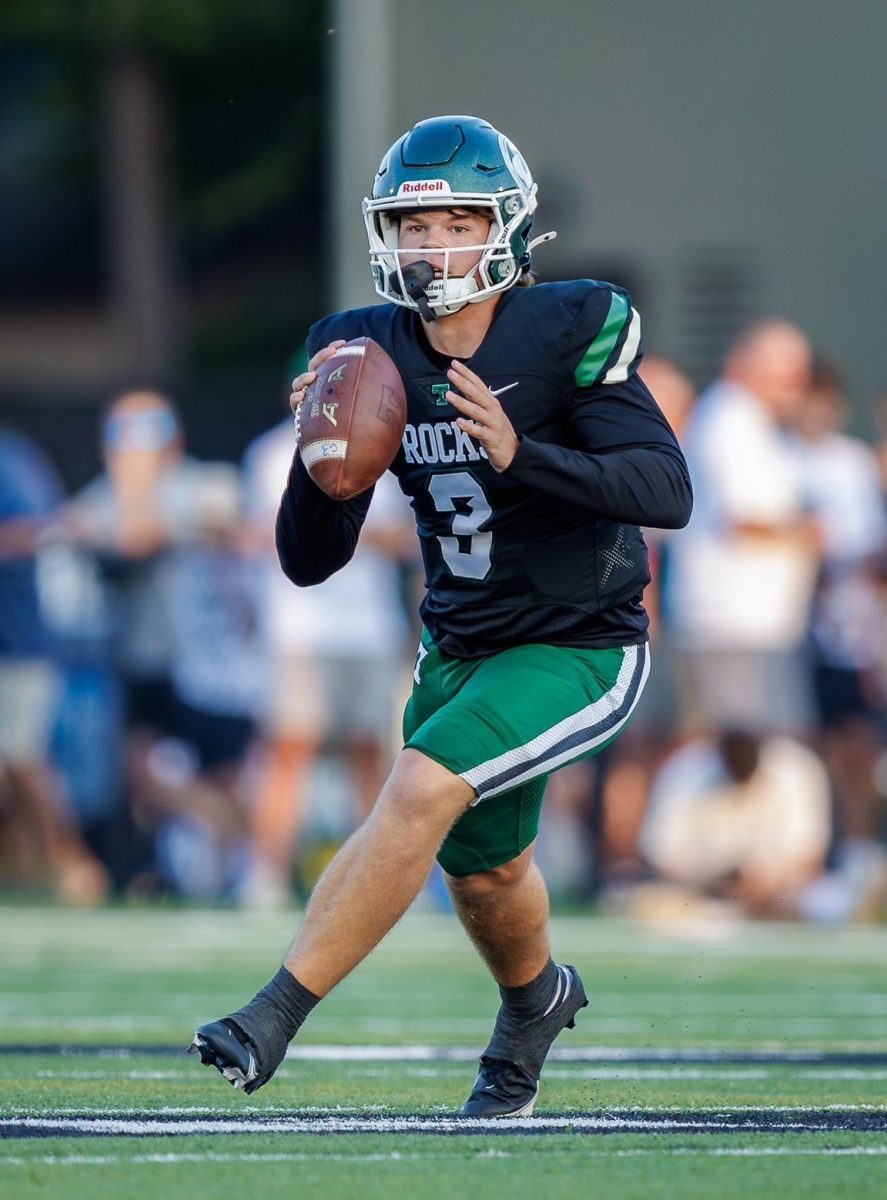
Rob Mullen • Mar 27, 2024 at 3:44 pm
Nolan did an excellent job with this article. Every fact is correct. He captures the excitement people are finding with this project. Trinity has a rich history and a bright future. Trinity is bigger than any one of us. These displays help reinforce these important facts. Dr. Mullen